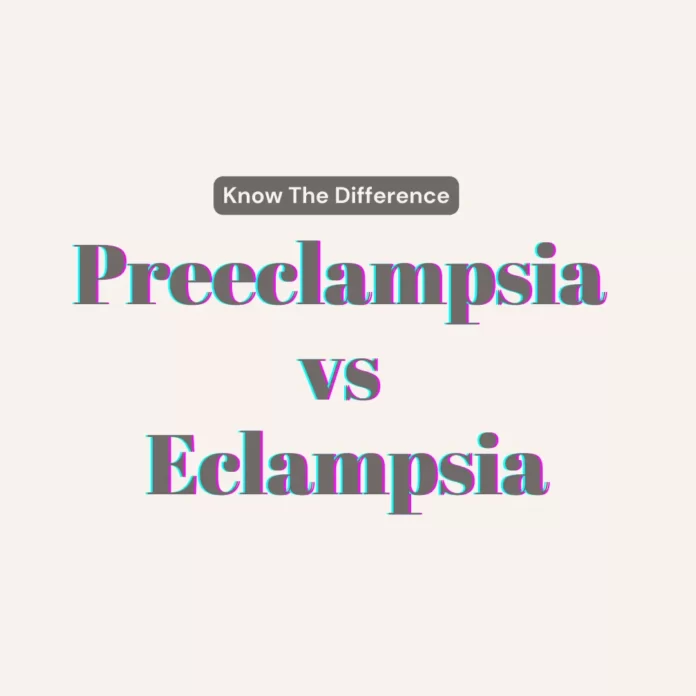Table of Contents
Preeclampsia vs Eclampsia
| Feature | Preeclampsia | Eclampsia |
|---|---|---|
| Definition | Pregnancy complication characterized by high blood pressure and protein in the urine after 20 weeks of pregnancy | Serious complication of preeclampsia characterized by seizures |
| Prevalence | Affects about 5% of all pregnancies | Affects about 1 in every 300 women with preeclampsia |
| Symptoms | High blood pressure, protein in the urine, swelling in the hands, feet, and face, headache, visual changes, upper abdominal pain, nausea, and vomiting | Seizures, loss of consciousness, coma |
| Risk factors | First pregnancy, age over 35, multiple pregnancies, chronic high blood pressure, kidney disease, diabetes, obesity, family history of preeclampsia | Severe preeclampsia, untreated preeclampsia, lack of prenatal care |
| Treatment | Bed rest, medications to lower blood pressure, monitoring the baby’s health, early delivery in severe cases | Medications to stop seizures, medications to lower blood pressure, monitoring the mother’s and baby’s health, early delivery in severe cases |
| Prevention | None known, but regular prenatal care can help to identify and manage preeclampsia and eclampsia early | None known, but regular prenatal care can help to identify and manage preeclampsia and eclampsia early |
| Occurrence | After 20 weeks of pregnancy in women whose blood pressure had previously been in the standard range | Can occur during or shortly after pregnancy |
| Proteinuria | Present | Present |
| Complications | Reduced blood supply to the fetus, which may get less oxygen and fewer nutrients | Brain damage or the death of the mother, baby, or both |
| Risk factors | High blood pressure before pregnancy, obesity, diabetes, multiple gestations (twins), previous pregnancies with preeclampsia, certain autoimmune conditions, kidney disease, heredity, ethnicity, being older than 35 or younger than 20, first pregnancies, and IVF pregnancies | Same as preeclampsia |
Details about Preeclampsia
- Definition: A pregnancy complication characterized by high blood pressure and protein in the urine after 20 weeks of pregnancy.
- Severity: Can be mild or severe; may develop in women with normal blood pressure before pregnancy.
Symptoms of Preeclampsia:
- High blood pressure (140/90 mmHg or higher)
- Protein in the urine
- Swelling in the hands, feet, and face
- Headache
- Visual changes
- Upper abdominal pain
- Nausea and vomiting
Risk Factors for Preeclampsia:
- First pregnancy
- Age over 35
- Multiple pregnancies
- Chronic high blood pressure
- Kidney disease
- Diabetes
- Obesity
- Family history of preeclampsia
Treatment for Preeclampsia:
- Goal: Prevent complications for the mother and baby.
- Includes: Bed rest, medications to lower blood pressure, monitoring the baby’s health, early delivery in severe cases.
Details about Eclampsia
- Definition: A serious complication of preeclampsia characterized by seizures.
- Incidence: Rare, affecting about 1 in every 300 women with preeclampsia.
Symptoms of Eclampsia:
- Seizures
- Loss of consciousness
- Coma
Risk Factors for Eclampsia:
- Severe preeclampsia
- Untreated preeclampsia
- Lack of prenatal care
Treatment for Eclampsia:
- Emergency: Eclampsia is a medical emergency.
- Includes: Medications to stop seizures, medications to lower blood pressure, monitoring the mother’s and baby’s health, early delivery in severe cases.
Prevention of Preeclampsia and Eclampsia:
- No known prevention method.
- Recommendation: Regular prenatal care can help identify and manage these conditions early.
Important Note:
- If pregnant and experiencing symptoms of preeclampsia or eclampsia, seek immediate medical attention.
Read More: FDA approves Zepbound: Cost, Coupons, and Availability
Conclusion
In conclusion, understanding the disparities between Preeclampsia vs Eclampsia is vital for expectant mothers and healthcare providers. While both conditions pose serious risks during pregnancy, Preeclampsia is characterized by elevated blood pressure and proteinuria, whereas Eclampsia involves seizures. Timely recognition of symptoms, risk factors, and appropriate prenatal care are crucial for early intervention and prevention of complications. This knowledge empowers individuals to make informed decisions, ensuring the well-being of both mother and baby throughout the pregnancy journey.

Thanks for sharing. I read many of your blog posts, cool, your blog is very good.